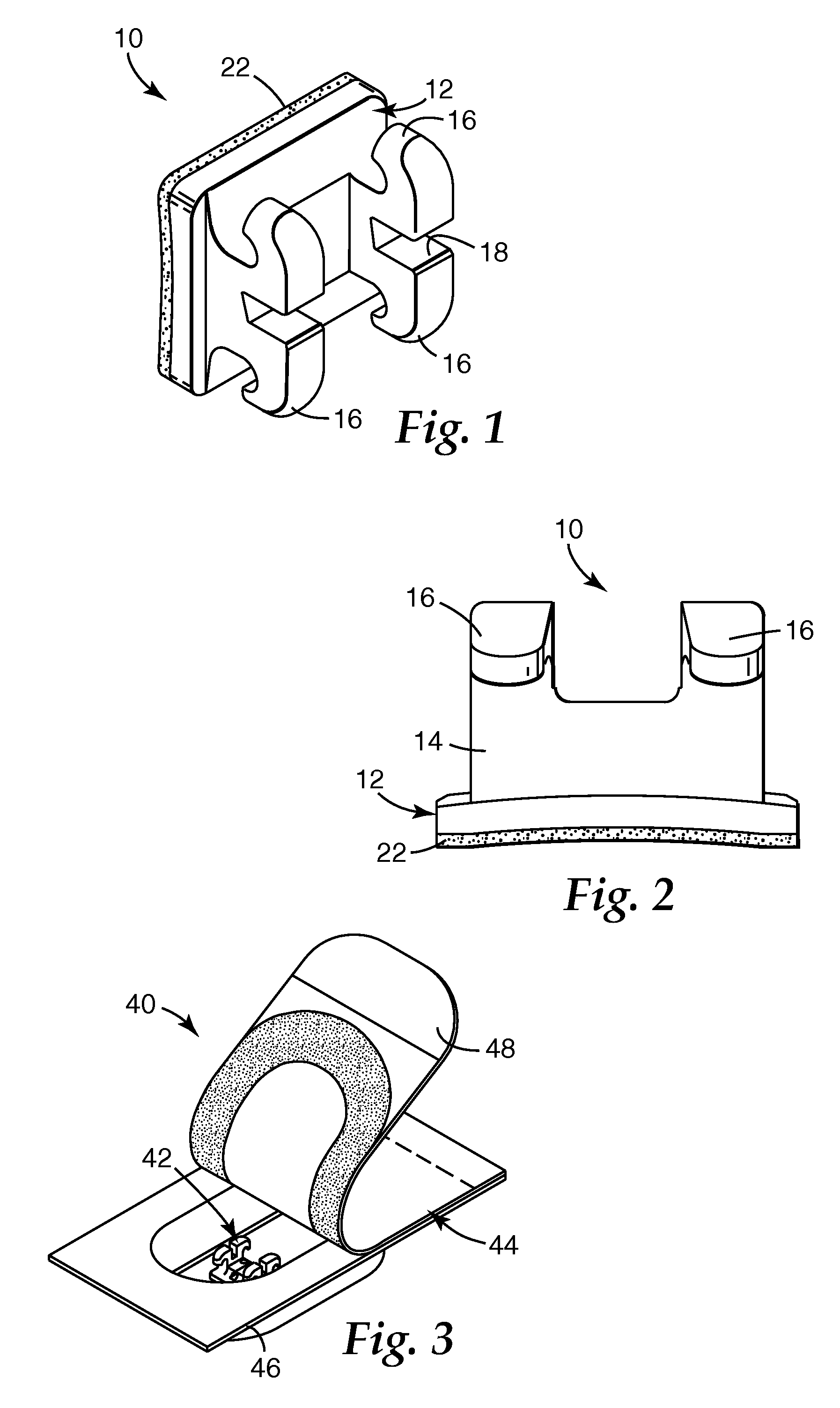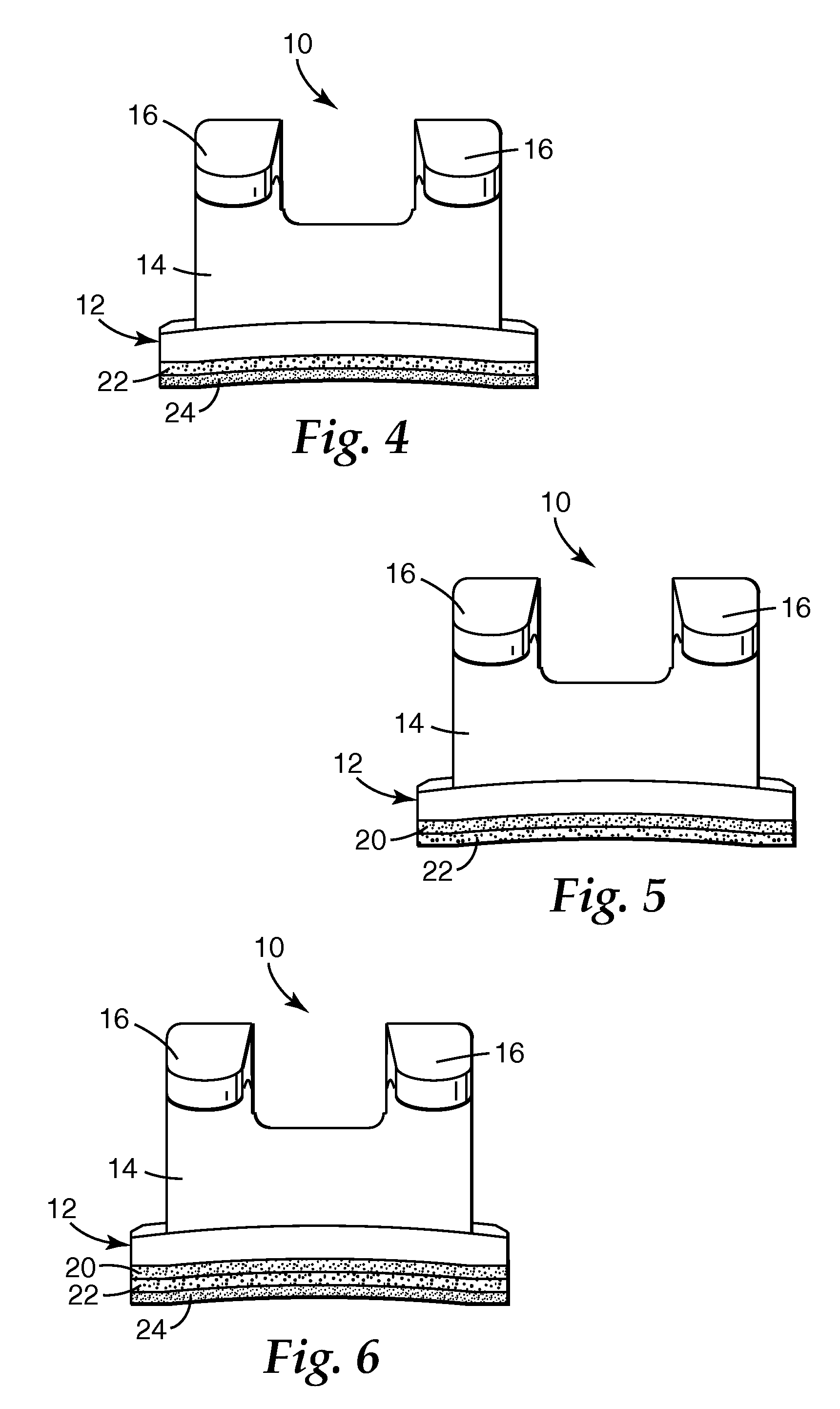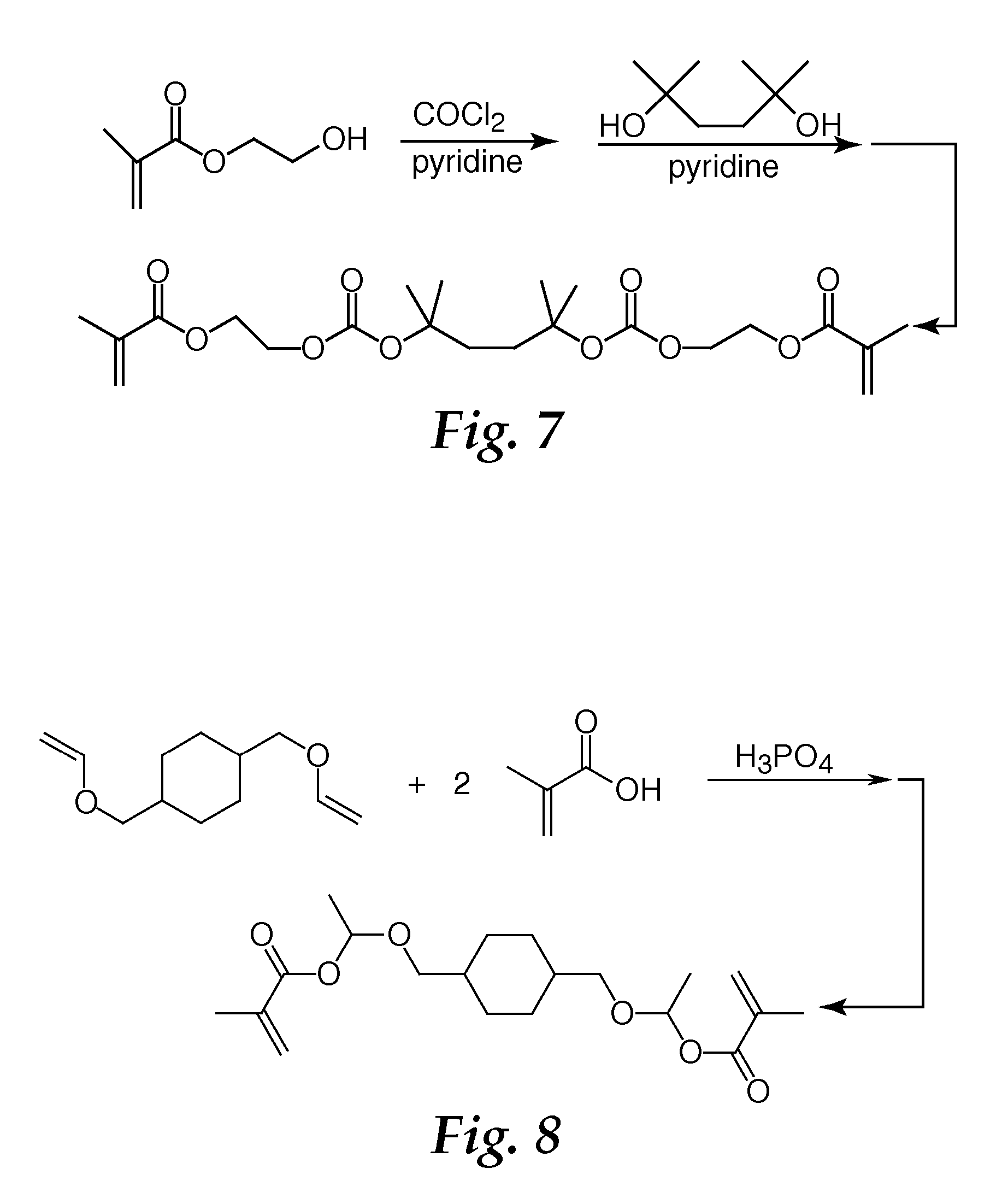Methods for reducing bond strengths, dental compositions, and the use thereof
a technology of dental composition and bond strength, which is applied in the direction of impression caps, other chemical processes, instruments, etc., can solve the problems of reduced bond strength and cohesion failure of hardened dental composition, and achieve the effect of reducing the bond strength of orthodontic appliances, sufficient bond strength, and reducing the bond strength
- Summary
- Abstract
- Description
- Claims
- Application Information
AI Technical Summary
Benefits of technology
Problems solved by technology
Method used
Image
Examples
example 1
Thermogravimetry Evaluation of t-BOCDMA / 2-EHA Films
[0211] In order to demonstrate the photosensitivity property of t-BOCDMA, a film containing t-BOCDMA was prepared and subjected to thermogravimetry according to the following procedures.
[0212] A polymeric network (film) consisting of 6.4% t-BOCDMA and 1.9% Ar3S+ SbF6− in 2-EHA (57.4%) was prepared thermally as follows using 0.7% lauroyl peroxide (Sigma-Aldrich) with propylene carbonate (33.6%)as a solvent. The composition was poured into a mold prepared by adhering 2 layers of VHB tape (3M Company) to a 2-mil thick polyester release liner that had been silicone treated on both sides. Another strip of the same release liner was used to cover the mold. The entire assembly was placed in an oven that was heated from room temperature to 90° C. over 20 minutes, held at 90° C. for 30 minutes followed by a cool down to 40° C. over 20 minutes. After curing, the sample was removed from the mold by peeling away the release liner and pushing ...
example 2
Thermal Bonding and Photothermal Debonding on Glass Using an Adhesive Containing t-BOCDMA / HEMA / BPO / Sulfonium Salt
[0215] In order to demonstrate the thermal bonding (i.e., bonding after exposure to heat) and photothermal debonding (i.e., debonding after sequential exposure to irradiation and then heat) properties of adhesives containing t-BOCDMA, an adhesive coating containing t-BOCDMA was prepared and thermally cured to adhere an orthodontic bracket to a glass slide. The adhered bracket was subjected to sequential UVA irradiation and heat, and shear bond strengths determined. These procedures were carried out according to the following details.
[0216] An adhesive formulation (Example 2) containing HEMA (86.5%), t-BOCDMA (10.0%), Ar3S+ SbF6− (2.6%) and BPO (0.9%) was prepared. Window glass slides (3-mm thickness) were cleaned with methanol just prior to use. Approximately 10 mg of the formulation was placed on the non-fluorescent side of the cleaned slide as a single drop. A TRANSCE...
example 3
Photobonding and Photothermal Debonding on Glass Using an Adhesive Containing t-BOCDMA / HEMA / IRGACURE / Sulfonium Salt
[0219] In order to demonstrate the photobonding (i.e., bonding after exposure to radiation) and photothermal debonding properties of adhesives containing t-BOCDMA, an adhesive coating containing t-BOCDMA was prepared and photochemically cured to adhere an orthodontic bracket to a glass slide. The adhered bracket was subjected to sequential UVA irradiation and heat, and shear bond strengths determined. These procedures were carried out as follows.
[0220] An adhesive formulation (Example 3) consisting of HEMA (86.8%), t-BOCDMA (9.6%), Ar3S+ PF6− (2.6%, 50% solution in propylene carbonate) and IRGACURE 819 (0.9%) was prepared. The procedure for preparing the glass slides was identical to that described in Example 2. Approximately 10 mg of the formulation was placed on the non-fluorescent side of the cleaned slide as a single drop. A TRANSCEND 6000 ceramic bracket (Part No...
PUM
| Property | Measurement | Unit |
|---|---|---|
| temperature | aaaaa | aaaaa |
| bond strength | aaaaa | aaaaa |
| temperature | aaaaa | aaaaa |
Abstract
Description
Claims
Application Information
 Login to View More
Login to View More - R&D
- Intellectual Property
- Life Sciences
- Materials
- Tech Scout
- Unparalleled Data Quality
- Higher Quality Content
- 60% Fewer Hallucinations
Browse by: Latest US Patents, China's latest patents, Technical Efficacy Thesaurus, Application Domain, Technology Topic, Popular Technical Reports.
© 2025 PatSnap. All rights reserved.Legal|Privacy policy|Modern Slavery Act Transparency Statement|Sitemap|About US| Contact US: help@patsnap.com



